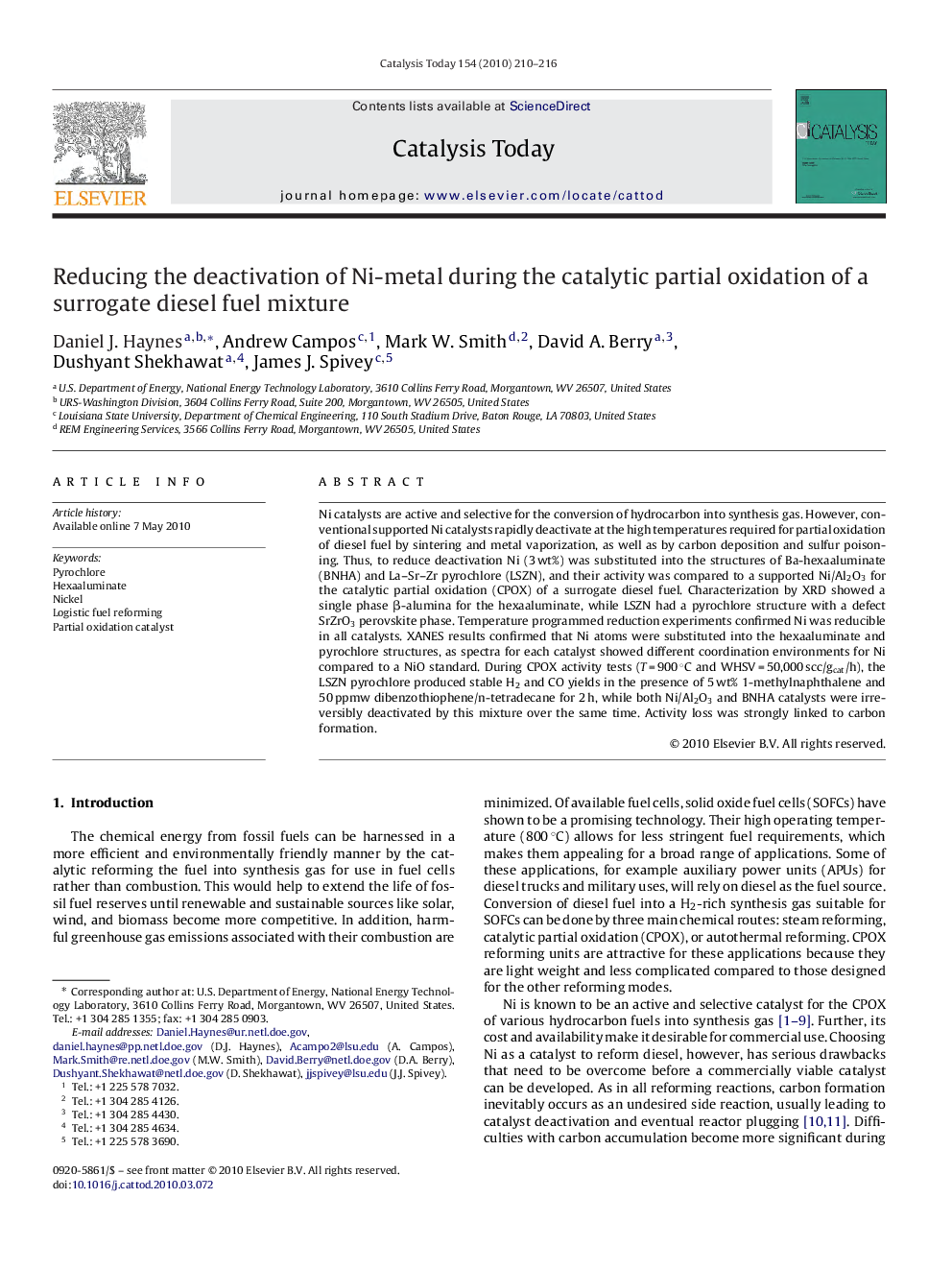| کد مقاله | کد نشریه | سال انتشار | مقاله انگلیسی | نسخه تمام متن |
|---|---|---|---|---|
| 56273 | 47080 | 2010 | 7 صفحه PDF | دانلود رایگان |

Ni catalysts are active and selective for the conversion of hydrocarbon into synthesis gas. However, conventional supported Ni catalysts rapidly deactivate at the high temperatures required for partial oxidation of diesel fuel by sintering and metal vaporization, as well as by carbon deposition and sulfur poisoning. Thus, to reduce deactivation Ni (3 wt%) was substituted into the structures of Ba-hexaaluminate (BNHA) and La–Sr–Zr pyrochlore (LSZN), and their activity was compared to a supported Ni/Al2O3 for the catalytic partial oxidation (CPOX) of a surrogate diesel fuel. Characterization by XRD showed a single phase β-alumina for the hexaaluminate, while LSZN had a pyrochlore structure with a defect SrZrO3 perovskite phase. Temperature programmed reduction experiments confirmed Ni was reducible in all catalysts. XANES results confirmed that Ni atoms were substituted into the hexaaluminate and pyrochlore structures, as spectra for each catalyst showed different coordination environments for Ni compared to a NiO standard. During CPOX activity tests (T = 900 °C and WHSV = 50,000 scc/gcat/h), the LSZN pyrochlore produced stable H2 and CO yields in the presence of 5 wt% 1-methylnaphthalene and 50 ppmw dibenzothiophene/n-tetradecane for 2 h, while both Ni/Al2O3 and BNHA catalysts were irreversibly deactivated by this mixture over the same time. Activity loss was strongly linked to carbon formation.
Journal: Catalysis Today - Volume 154, Issues 3–4, 15 September 2010, Pages 210–216